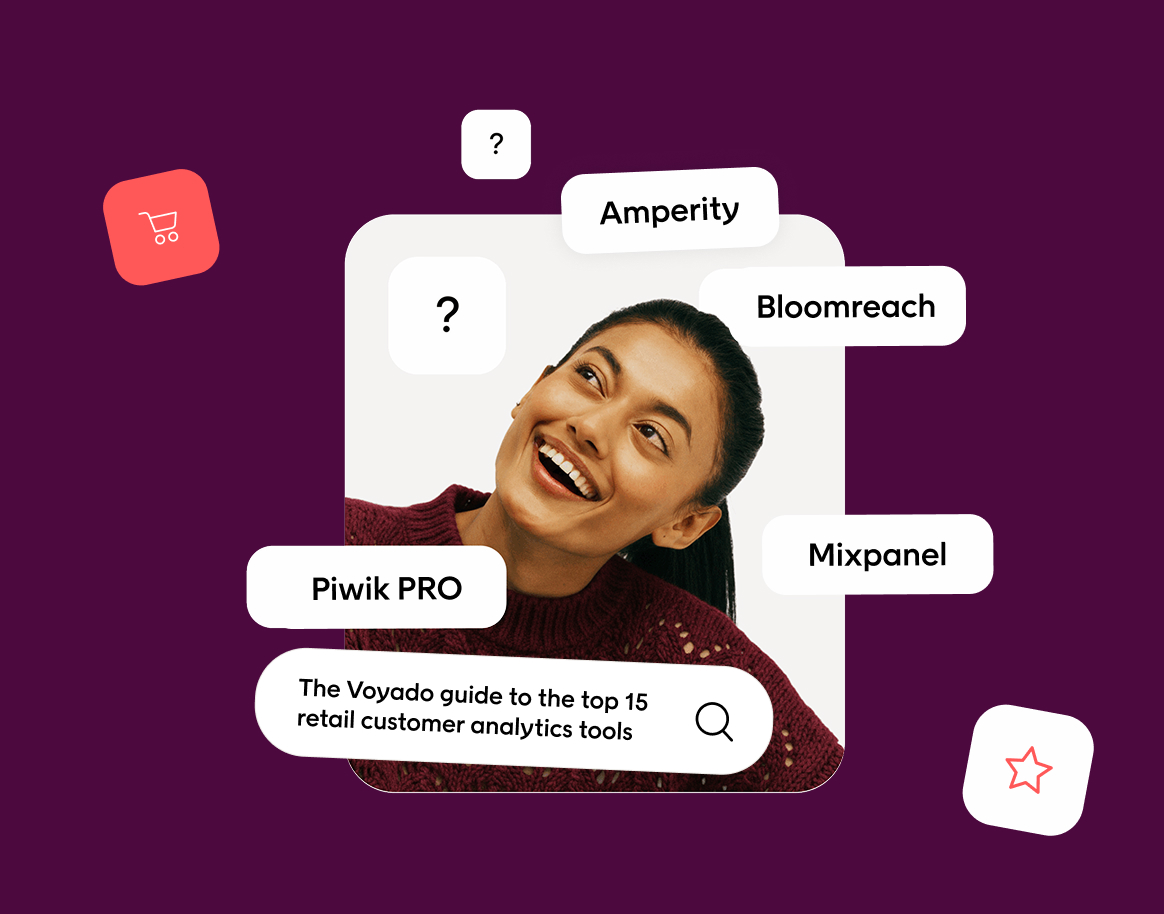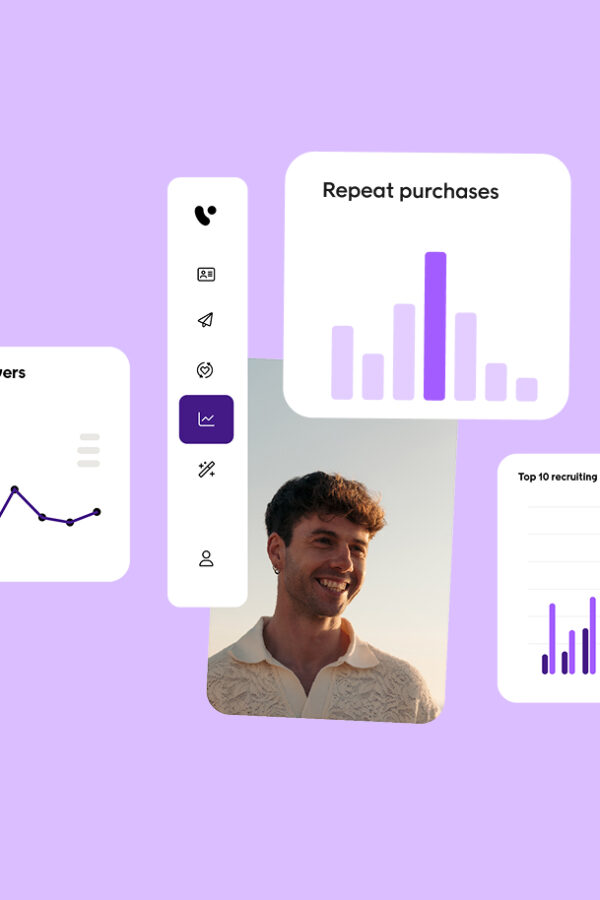TL;DR
- Retail customer analytics helps your business understand customer behavior and turn data into real growth.
- First-party data is now the key to strong personalization and smart segmentation.
- The best platforms show trends fast and help your teams act with confidence across every channel.
- Real-time insights support loyalty, customer satisfaction, and higher customer lifetime value.
- Voyado brings analytics, loyalty, and activation together in one platform built for retail.
You handle a lot of data every day. Your online store, loyalty program, email campaigns, and social channels all show how customers behave.
What your team needs is a straightforward way to understand that behavior.
That is where retail customer analytics helps. It brings your customer data together so you can see what people want, when they want it, and what keeps them coming back.
When you use these insights in your marketing, you build stronger relationships and more repeat purchases.
First-party data makes this even more critical.
Findings from Voyado’s Inside e-commerce 2026 show that 57 percent of e-commerce managers now rely on first-party data for personalization and segmentation.
Another 22 percent already prepare for a future without third-party cookies.
This shift shows up in real shopper behavior. Findings from Voyado’s retail radar show that customers who engage with personalized messages and loyalty programs drive most retail revenue.
Strong analytics help your business act on these signals. The right platform turns raw data into decisions your team can use every day.
How we selected the top retail customer analytics software for your business
Choosing the right platform can feel overwhelming. Most tools sound similar, but they do very different things once your teams start using them.
We focused on the features that help your business understand customer behavior, find valuable insights, and act on them fast.
What we looked for
| Evaluation area | Why it matters | What we checked |
| Data coverage | Helps you identify trends across the full customer journey | Website activity, purchase history, app events, customer transactions, social media engagement, and in-store data |
| Unification | Builds a clear single view of each customer | Consent handling, data quality, cross-device IDs, and profile stitching |
| Real-time capabilities | Supports real-time customer analytics for retail | Event-based updates, predictive analytics, and customer behavior data you can use right away |
| Actionability | Turns analytics into targeted marketing campaigns | Triggers for customer retention, customer loyalty, and optimized pricing strategies |
| Visualization | Makes customer behavior analysis simple | Easy dashboards, role-based reports, and meaningful insights your teams can act on |
| Retail-specific models | Keeps the data relevant to the retail business | Customer lifetime value, churn, product affinity, basket analysis, and inventory data |
| Scalability and governance | Protects customer data and supports growth | Data protection regulations, privacy controls, and smooth integrating data across channels |
| Time to value | Helps teams make informed decisions fast | Prebuilt connectors, templates, and automated reports that reduce setup time |
Why these criteria matter
- They help your teams understand customer behavior at scale so you can respond to customer needs with confidence.
- They support data-driven insights that improve customer satisfaction and reduce lost sales.
- They give your business a competitive advantage by showing what customers want, how they interact, and which marketing strategies work.
These criteria make it easier to see which platforms deliver real value. When you know what to look for, you can spot the tools that help your business act on customer insights instead of just reporting on them.
With this in mind, here are the retail customer analytics platforms that stand out for 2026.
The best retail customer analytics platforms for 2026
Retail teams want tools that make it easy to understand customer behavior and act on it fast.
The platforms below help your business analyze customer data, uncover valuable insights, and support better decisions throughout the customer journey.
You can scan the list and choose the software that best fits your goals, customer base, and marketing strategies.
1. Voyado: Retail-native analytics and activation in one platform
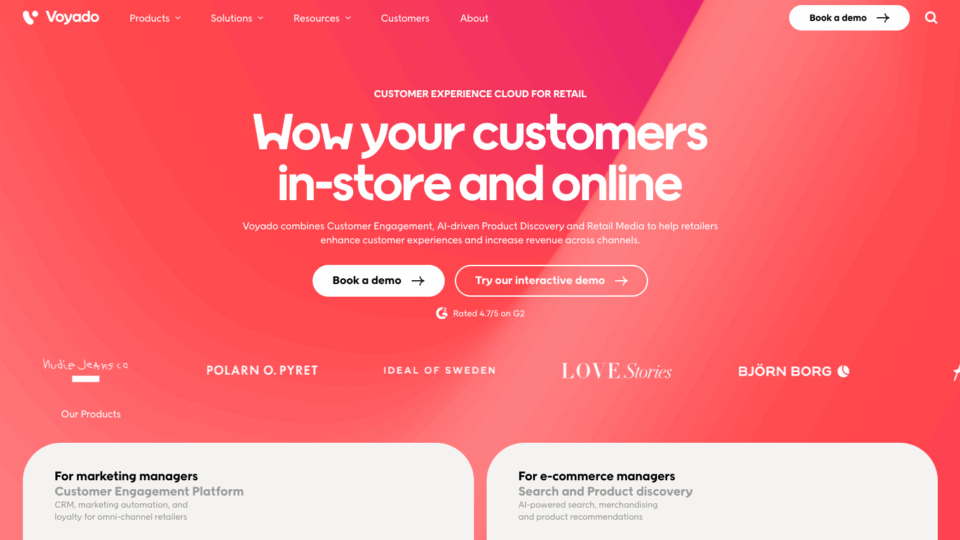
Voyado gives your business a clear view of every customer. It combines analytics, loyalty, and activation to help you understand customer behavior, predict customer needs, and respond in real time.
This makes it one of the strongest choices for customer analytics in retail and e-commerce customer analytics.
Voyado brings all your customer data together in one place. The platform uses profile stitching, strong data quality controls, and real-time updates to build a single view of each shopper.
You can learn more about this capability in the Voyado guide to the single view of customer.
Why Voyado stands out
- Unified insights. Voyado’s customer data platform helps your teams analyze customer behavior across web, store, email, and social channels. This supports retail customer behavior analytics and customer behavior analytics for retail.
- Real-time segmentation. You can run real-time customer analytics for retail, build customer segments that update instantly, and act on customer behavior data without delay.
- Personalized journeys. Customers engage more when you send targeted marketing campaigns based on purchase history, customer transactions, and customer preferences.
- Built for loyalty. Voyado strengthens customer loyalty with tools made for customer retention, customer satisfaction, and lifetime value growth.
- Retail-specific models. You get predictive analytics for churn, customer lifetime value, and purchasing patterns. These models help your business drive customer loyalty and increase customer lifetime value.
- Store and location insights. If you manage stores, Voyado also supports store data and retail location analytics.
- Fast activation. Insights connect directly to email, SMS, and on-site actions. This saves time and turns retail data analytics into marketing strategies your teams can use right away.
Where Voyado fits best
Voyado is ideal for retail brands that want customer analytics in retail industry settings, strong loyalty features, and fast activation.
It also fits teams that want to improve inventory management, optimize pricing, and understand consumer behavior without juggling many retail data analytics tools.
If you want to learn why more retailers choose platforms like Voyado for unified data, read the guide on why retailers need a customer data platform.
2. Contentsquare
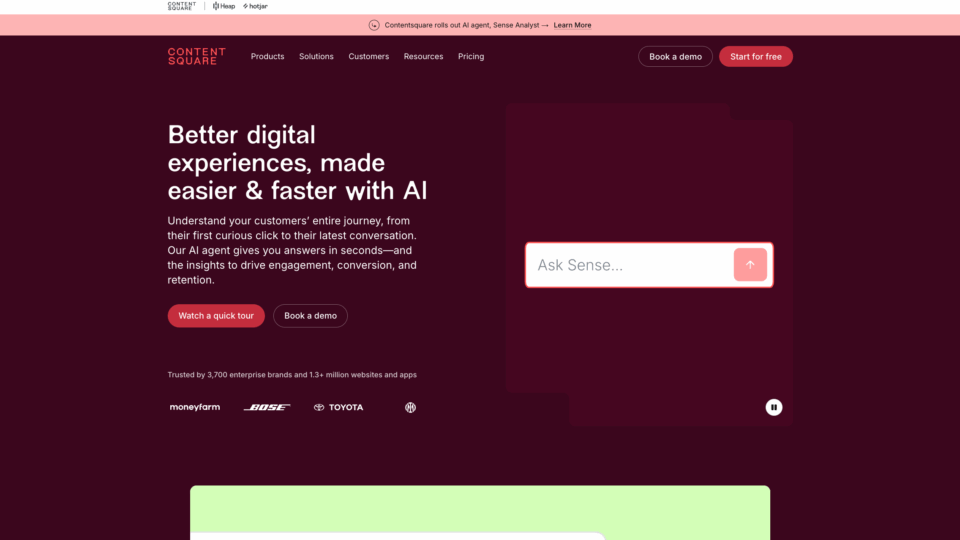
Contentsquare helps your team understand how people behave on your website and app.
Best for:
Brands that want clear experience insights and need to understand customer behavior and customer engagement.
Strengths:
- Tracks user journeys to identify trends and friction points.
- Offers heatmaps, session replays, and visual tools for actionable insights.
- Helps teams improve the customer journey with data-driven insights.
Limitations:
- No loyalty or CDP features.
- Not focused on retail analytics tools or store performance.
- May need a heavy setup for full value.
3. Optimove
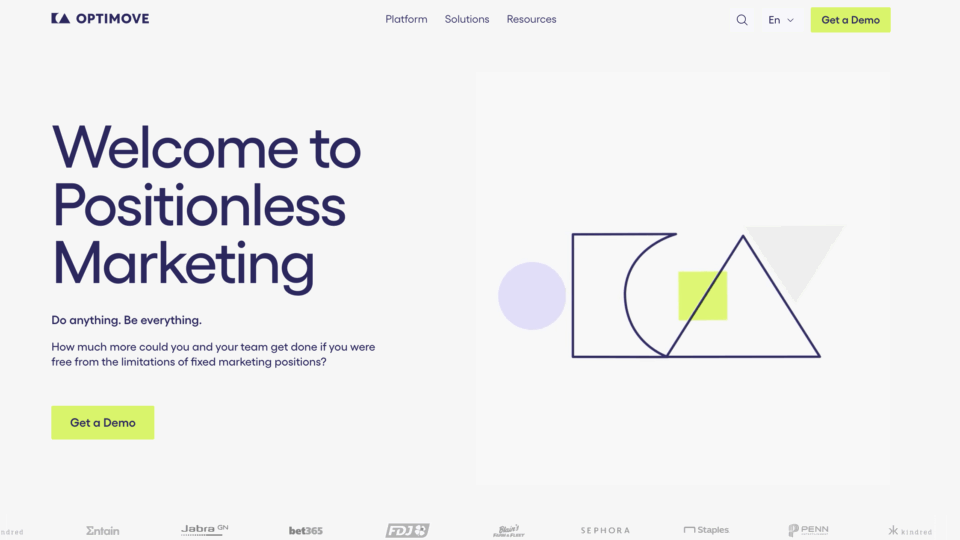
Optimove helps teams run personalized marketing with strong customer data and segmentation.
Best for:
Lifecycle and CRM teams that want targeted marketing strategies and customer retention growth.
Strengths:
- Uses real-time and historical customer data for deep segmentation.
- Supports campaigns across many channels to boost customer engagement.
- Helps teams understand customer needs and customer behavior patterns.
Limitations:
- Works best with a separate CDP.
- Learning curve for smaller teams.
- Not built for store analytics or supply chain data.
4. Amperity
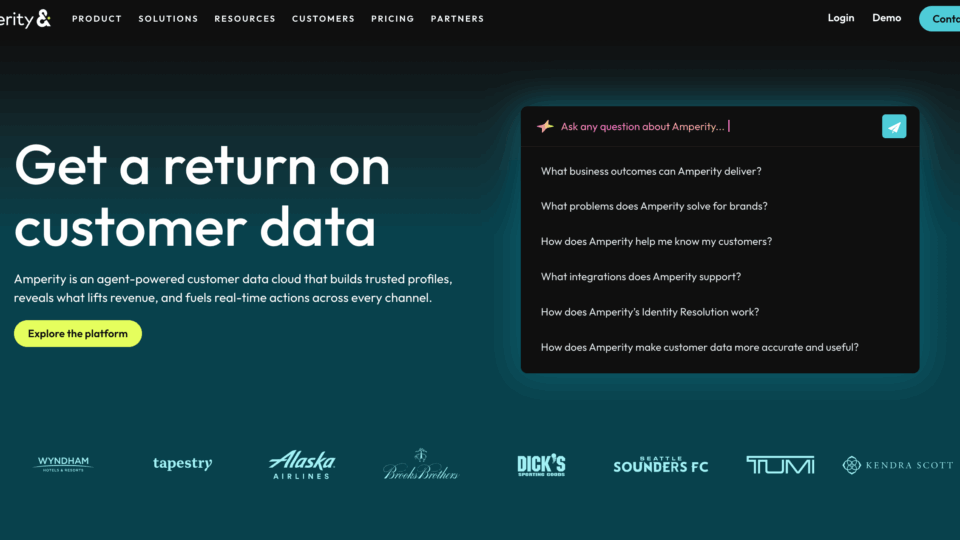
Amperity is a customer data platform focused on identity resolution and unified profiles.
Best for:
Brands with large datasets that want accurate customer segments and a strong customer base view.
Strengths:
- Creates unified profiles with strong data quality controls.
- Ingests online and offline customer behavior data.
- Supports segmentation for marketing campaigns and customer journey insights.
Limitations:
- Needs technical resources for setup.
- Not a marketing automation tool.
- Limited retail-specific analytics.
5. Microsoft Dynamics 365 Customer Insights
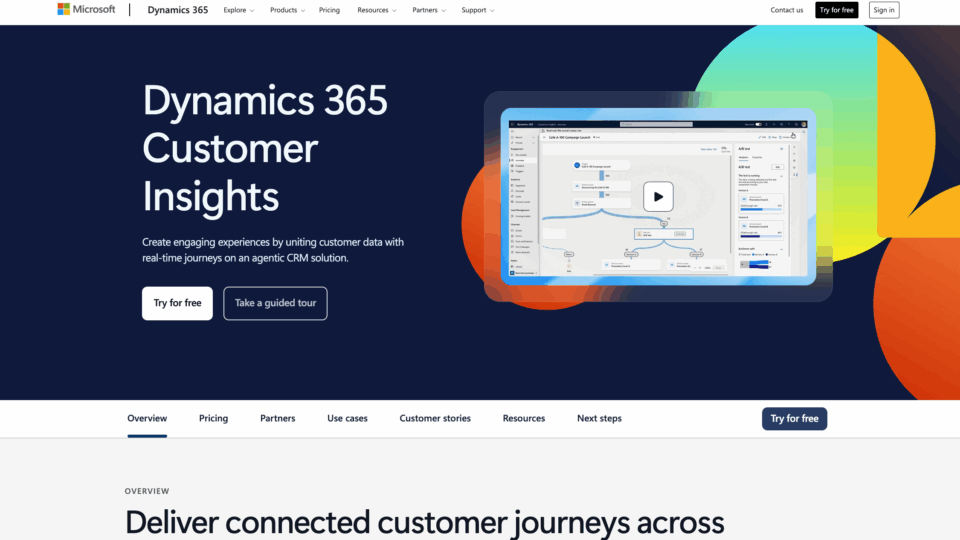
Customer Insights brings data and personalization together inside the Microsoft ecosystem.
Best for:
Teams that want unified profiles, customer feedback insights, and improved customer satisfaction.
Strengths:
- Builds profiles from many data types to support customer segmentation.
- Offers real-time insights that help teams understand their customers’ behavior.
- Copilot AI supports content ideas and faster decisions.
Limitations:
- Setup can feel complex.
- Works best with other Microsoft tools.
- Less retail-specific modeling.
6. Salesforce Data360
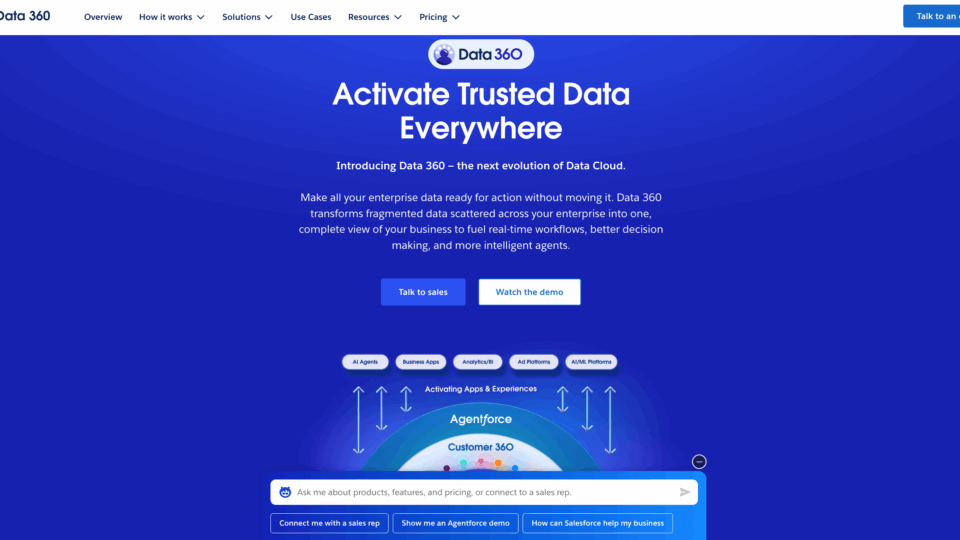
Salesforce Data360 connects data across the Salesforce suite for unified insights.
Best for:
Companies that want data-driven decisions and clearer customer lifetime value insights.
Strengths:
- Unifies large-scale customer data for segmentation.
- Supports activation inside Salesforce Marketing Cloud.
- Helps teams analyze customer behavior across many touchpoints.
Limitations:
- It can get expensive as data grows.
- Not focused on retail behavior analytics.
- Works best inside Salesforce ecosystems.
7. Bloomreach

Bloomreach supports campaigns and personalization with real-time data.
Best for:
E-commerce teams that want stronger customer experience and targeted marketing campaigns.
Strengths:
- Connects real-time product, event, and customer data.
- Supports multichannel marketing efforts.
- AI tools help teams identify trends and customer preferences.
Limitations:
- No store-level or supply chain insights.
- Needs accurate product feeds.
- Not a full retail analytics tool.
8. Google Analytics 4 + BigQuery

GA4 with BigQuery provides digital analytics and deeper data analysis.
Best for:
Teams that want to analyze customer behavior online and track customer trends.
Strengths:
- Tracks event-based actions across web and app.
- BigQuery supports advanced queries for valuable insights.
- Helps teams spot purchasing patterns and customer journey gaps.
Limitations:
- Not a CDP or customer loyalty tool.
- Limited retail customer analytics.
- No unified customer profiles.
9. Mixpanel
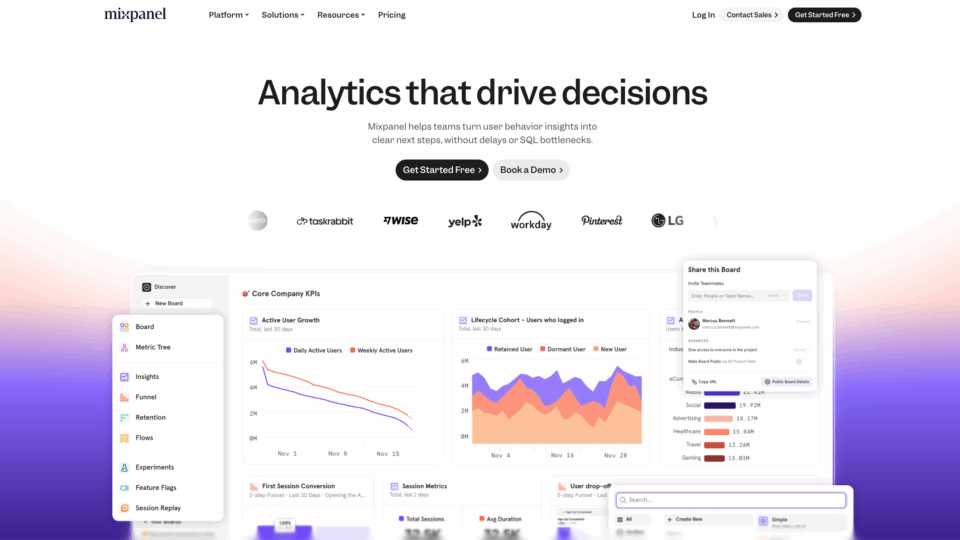
Mixpanel analyzes how users interact with your product or app.
Best for:
Brands that want to understand behavior and measure customer engagement.
Strengths:
- Tracks funnels, retention, and cohorts for actionable insights.
- Helps teams understand customer needs and usage patterns.
- Real-time data supports informed decisions.
Limitations:
- Not built for retail-specific analytics.
- No inventory or store data.
- Not designed for loyalty or customer retention modeling.
10. Piwik PRO
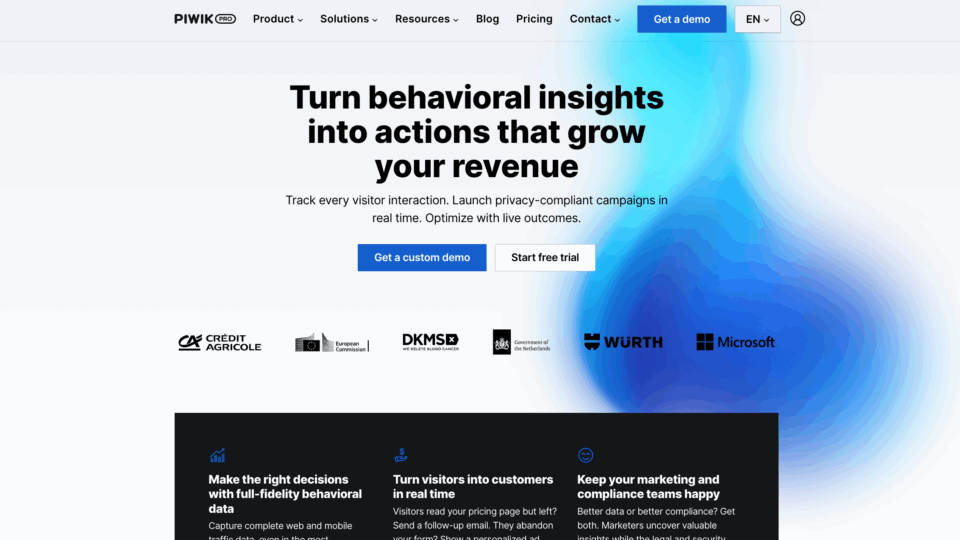
Piwik PRO offers privacy-focused data analytics suited for regulated environments.
Best for:
Teams that need privacy compliance and want simple customer insights.
Strengths:
- Includes data analytics, tag management, and a consent manager.
- Supports real-time analytics and e-commerce reporting.
- Helps teams act on customer feedback and customer journey data.
Limitations:
- Small ecosystem compared to Google or Adobe.
- Not built for retail data models.
- More setup effort required.
11. Woopra
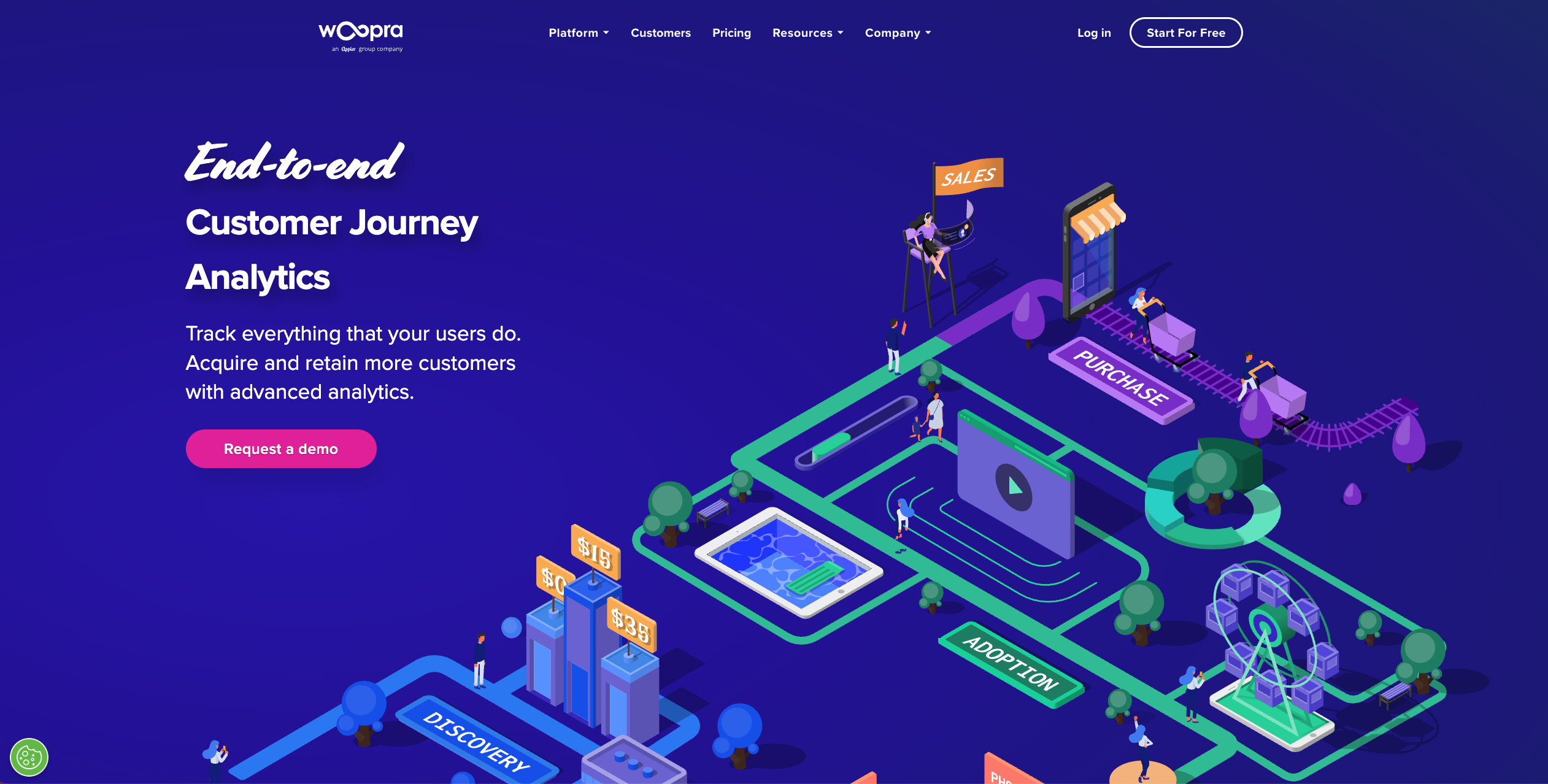
Woopra provides real-time customer journey analytics.
Best for:
Teams that want a full view of customer interactions and customer experience trends.
Strengths:
- Tracks behavior across product, marketing, and support.
- Offers journey, retention, and cohort reports.
- Helps teams find customer needs and engagement gaps.
Limitations:
- Not retail-specific.
- No store or inventory insights.
- Not designed for loyalty.
12. SAS Customer Intelligence 360
SAS CI 360 is an enterprise analytics and marketing suite.
Best for:
Enterprise teams that want predictive analytics and customer behavior analysis at scale.
Strengths:
- Unifies online and offline customer data.
- Uses AI and machine learning to build customer segments.
- Helps teams plan marketing campaigns and identify customer trends.
Limitations:
- High cost.
- Complex deployment.
- Enterprise-level features may be too heavy for smaller teams.
13. Quantilope
Quantilope supports automated consumer research and insight generation.
Best for:
Teams that want fast consumer data and meaningful insights.
Strengths:
- Offers advanced research methods for customer preferences.
- Automates studies for real-time insights.
- Helps teams understand consumer behavior and customer feedback.
Limitations:
- Not a customer data platform.
- No loyalty or activation features.
- Limited retail analytics capabilities.
14. Hiver
Hiver is a shared inbox and support analytics tool inside Gmail.
Best for:
Support teams that want more precise customer feedback and faster response times.
Strengths:
- Centralizes support emails and team workflows.
- Tracks SLAs and performance for operational efficiency.
- Helps teams improve customer satisfaction.
Limitations:
- Not a retail analytics tool.
- No product or transaction data.
- Limited segmentation.
15. GrowthFactor.ai
GrowthFactor.ai supports AI-powered retail and location analytics.
Best for:
Teams planning new stores and studying customer demand in different regions.
Strengths:
- Offers foot traffic, demographics, and competitor insights.
- Helps teams understand customer trends and market areas.
- AI agent supports faster site evaluation.
Limitations:
- Not built for e-commerce analytics.
- No loyalty or CRM features.
- Focused on physical store decisions.
These tools give your team different ways to understand buyer behavior and act on it with confidence. The right choice depends on your data, your goals, and how fast you want to turn insights into results.
Here is how to bring it all together.
Choose the right retail customer analytics tool
Retail customer analytics only create value when your team can use the insights quickly. This checklist helps you compare tools and choose the one that fits your goals.
Your decision checklist
- Confirm the tool supports all your customer data, including store, web, email, and loyalty.
- Check that it offers real-time insights so your team can act while behavior is fresh.
- Look for predictive models such as churn, lifetime value, and product affinity.
- Make sure it supports the marketing strategies and channels you already use.
- Review how fast your team can get value from the data, with clear dashboards and easy setup.
When you know what matters most, choose the retail customer analytics tool that helps your team work faster and make confident decisions.
If you want a platform that brings data analytics, loyalty, and activation together for retail, Voyado is built for that.
When you’re ready to see how Voyado helps your business use customer data to grow, book a Voyado demo to explore what the platform can do for you.
FAQs
What is customer analytics in retail?
Customer analytics in retail helps your team understand how people shop across your stores, website, and marketing channels. It shows what customers look for, what they buy, and what keeps existing customers loyal. This makes it easier to plan better offers and improve the customer experience.
How is customer analytics retail different from basic reporting?
Basic reporting only shows what happened. Customer analytics retail helps you find trends, understand why shoppers behave a certain way, and take action based on the insights. This supports better decisions across marketing, stores, and e-commerce teams.
What does customer analytics in the e-commerce market help with?
Customer analytics in the e-commerce market show how people move through your online store. It helps you see what grabs attention, where customers drop off, and which products drive the most interest. Teams use this data to improve the site, increase sales, and support stronger customer journeys.
Which retail customer analytics tool should my business choose?
Choose a tool that fits your customer data, your goals, and how your teams work. Look for real-time insights, strong segmentation, and easy-to-use dashboards. If you want one platform that brings analytics, loyalty, and activation together, a retail-focused system is often the best fit.
How do retail customer analytics tools support long-term growth?
They help your business understand customer trends, improve customer satisfaction, and create better marketing plans. When you act on these insights, you build stronger relationships and grow customer lifetime value naturally.
